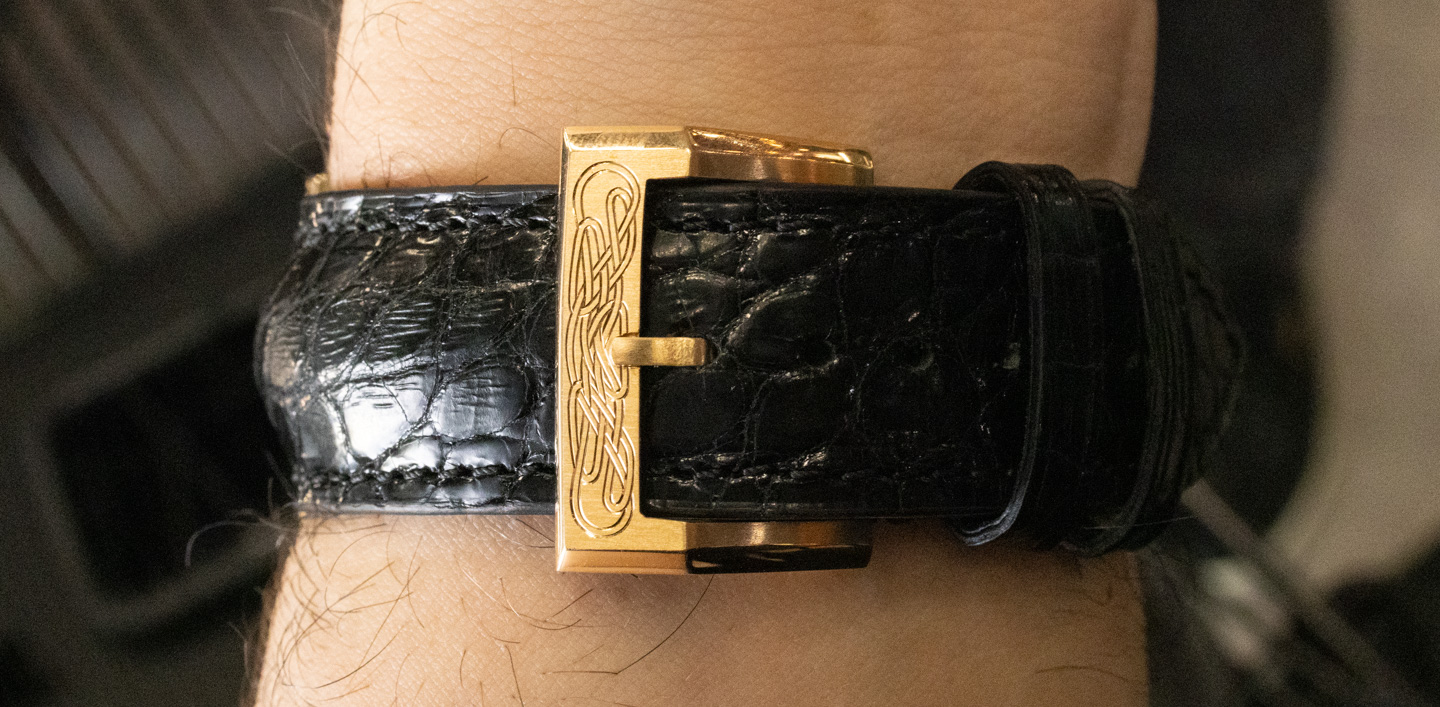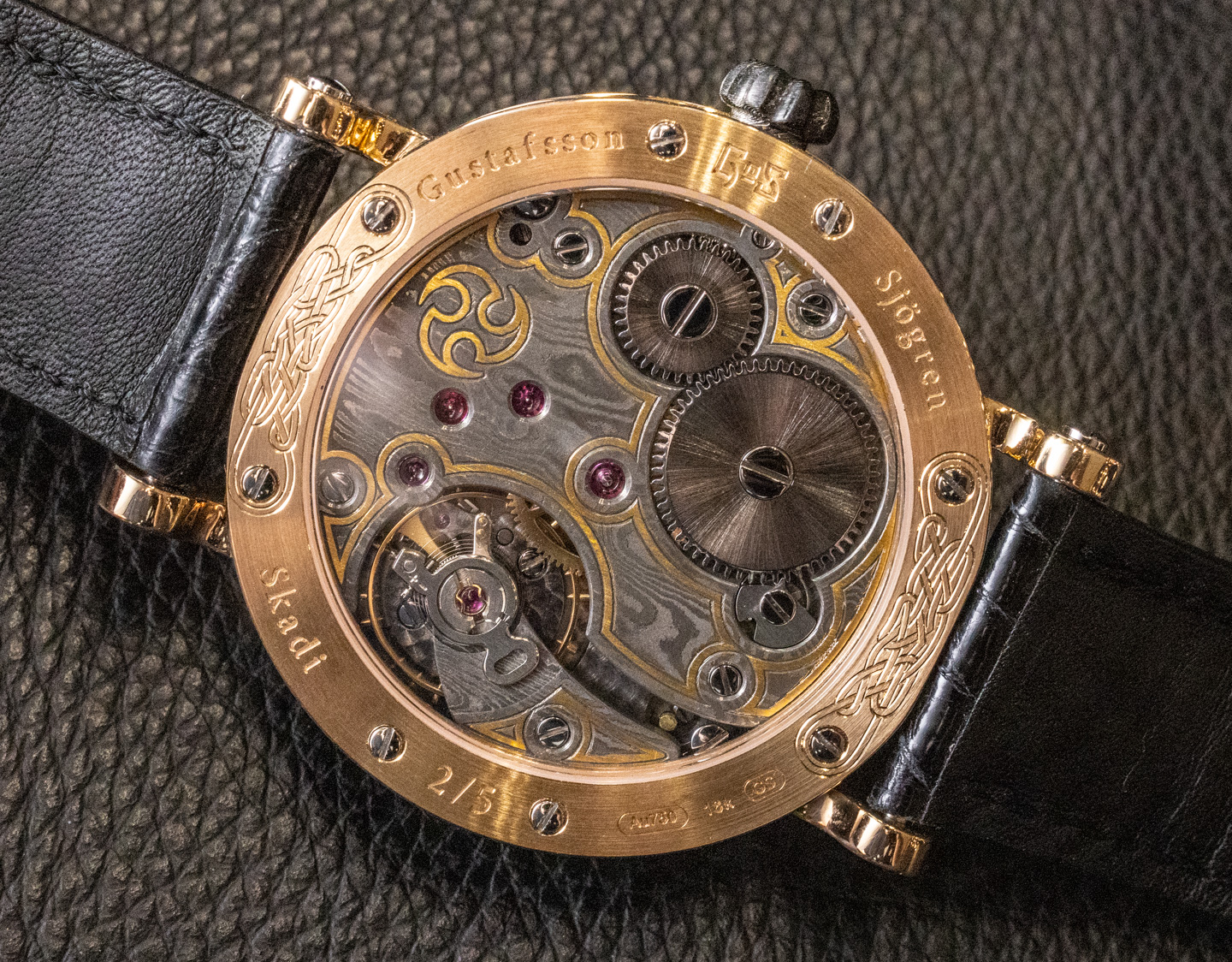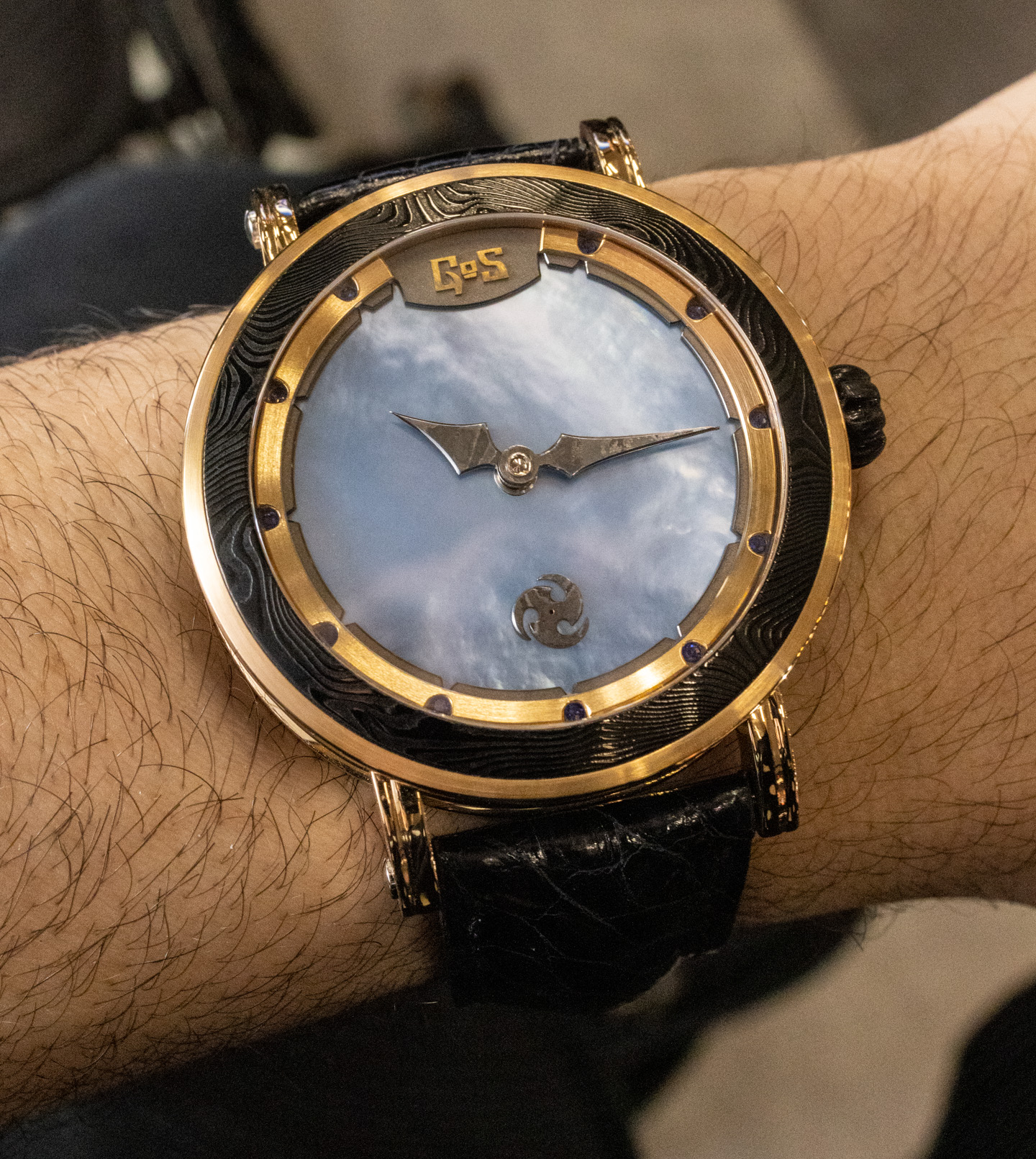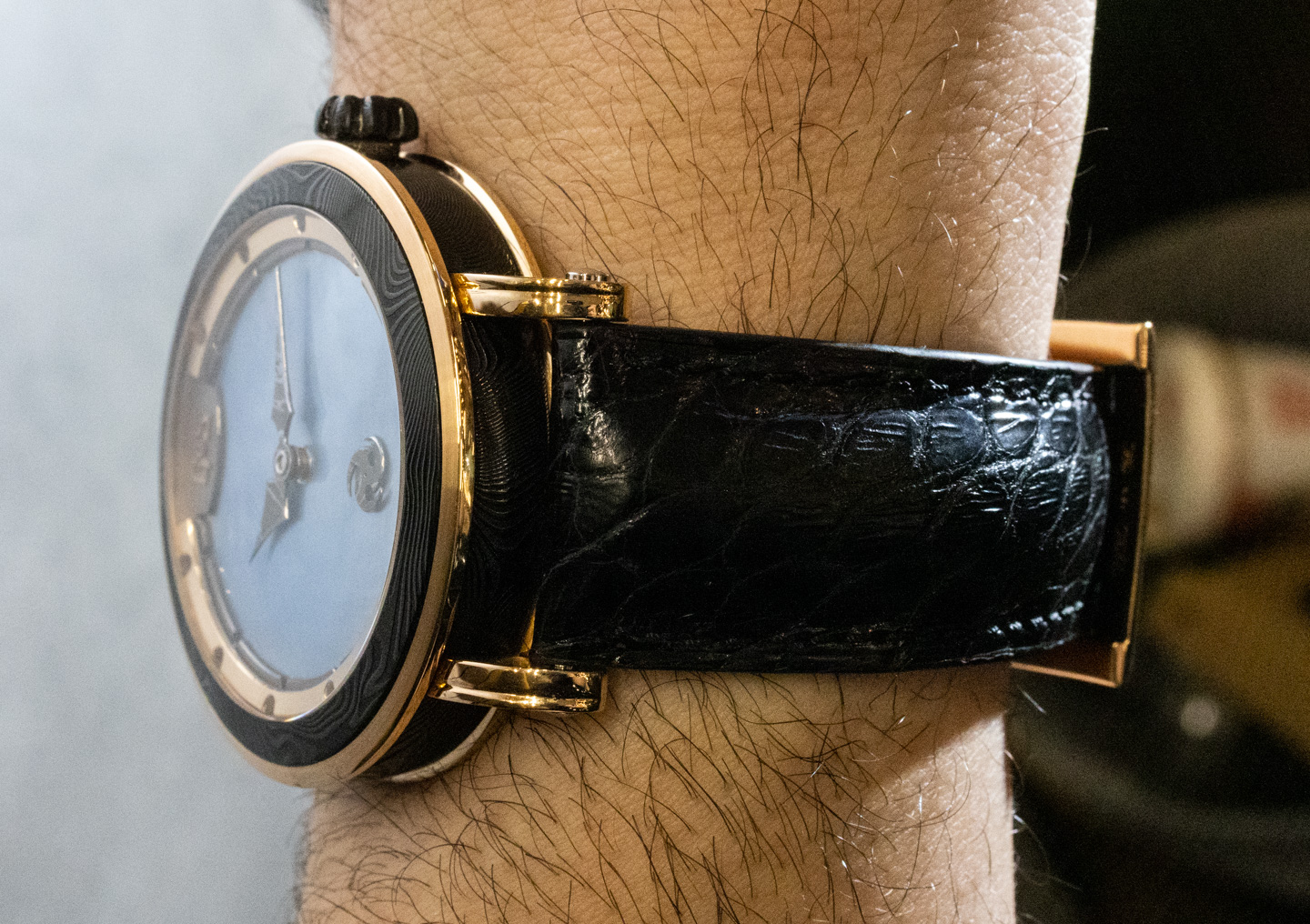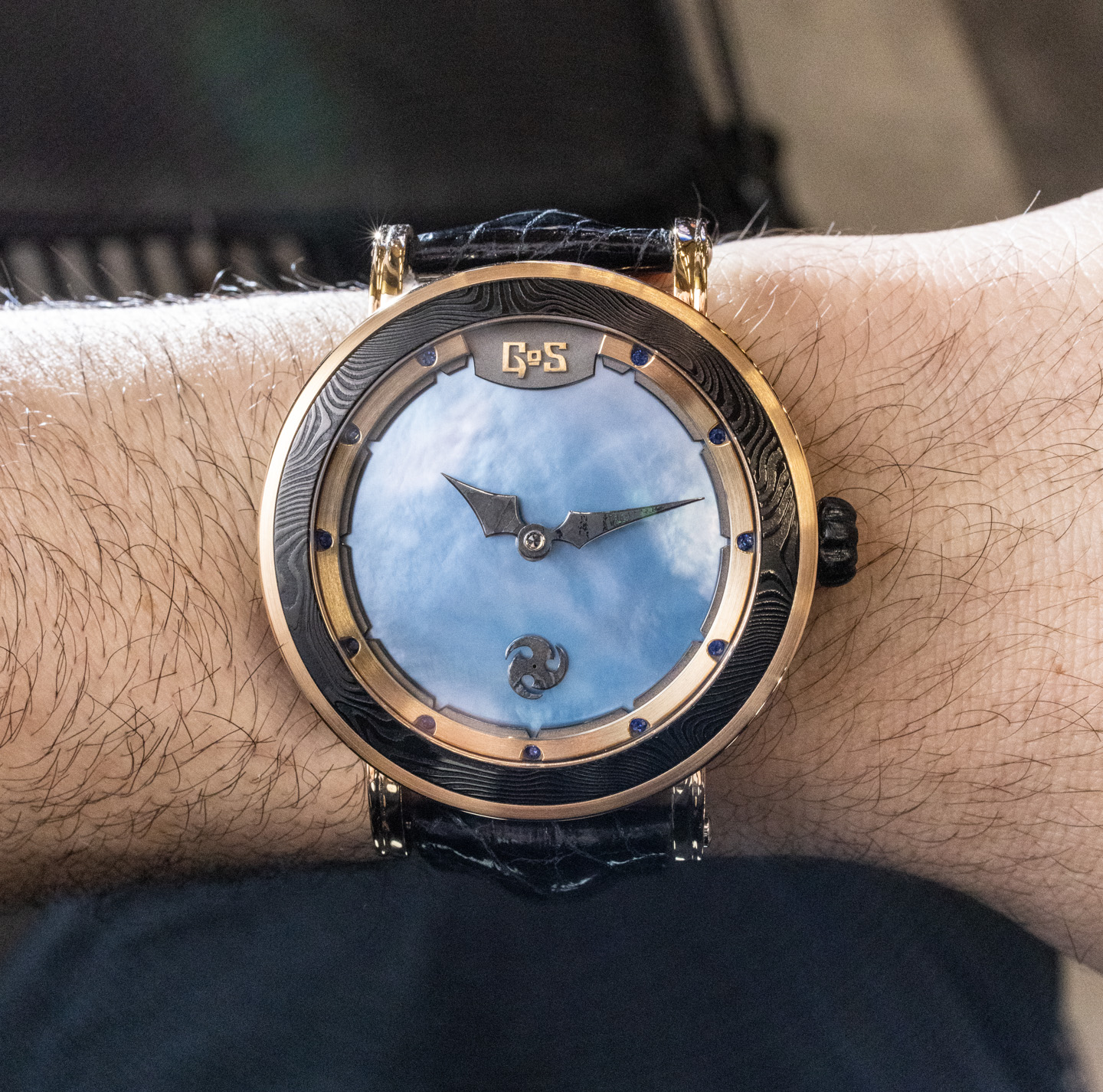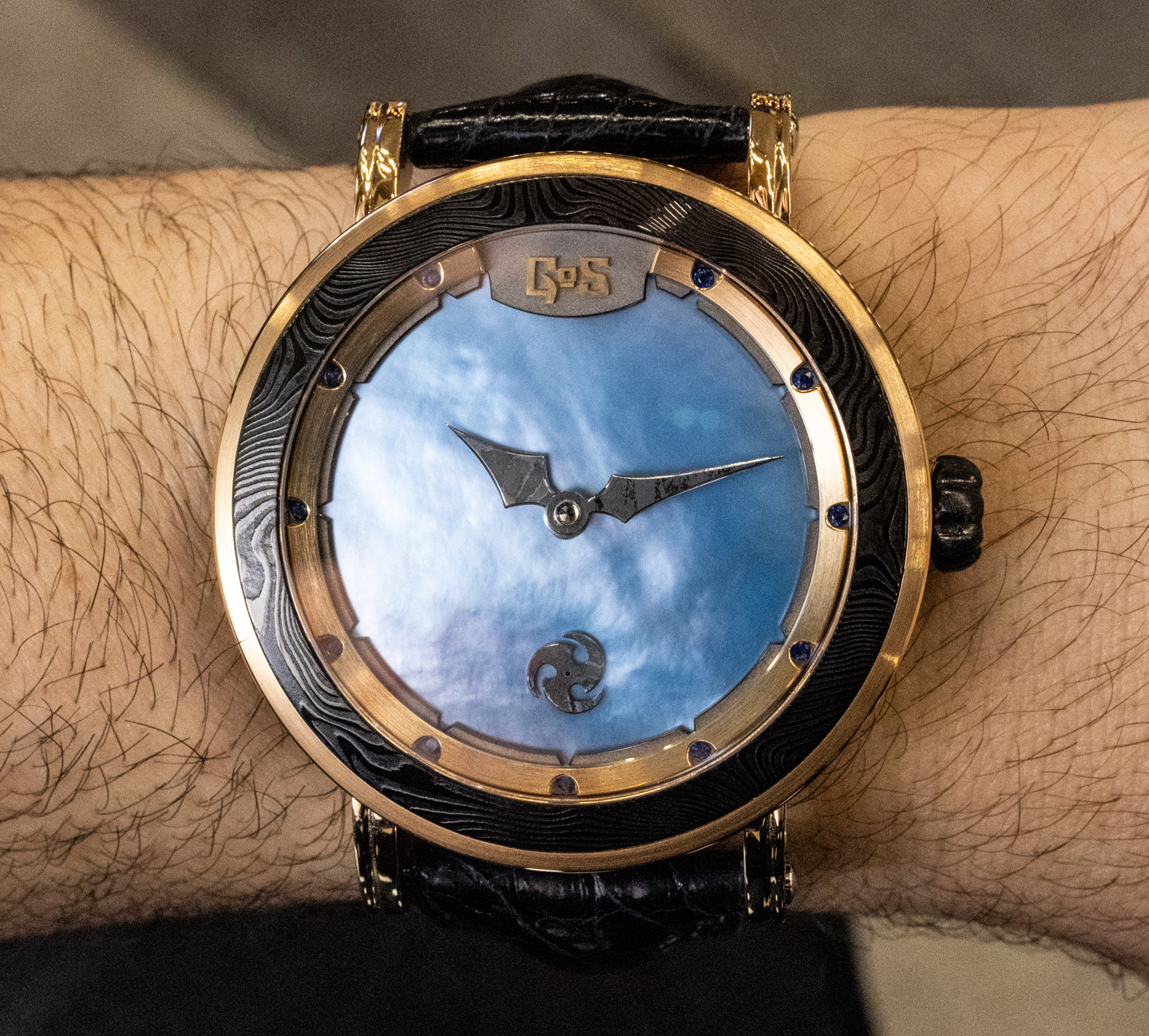
Swedish watchmaker GoS is among my niche brand favorites for combining original watchmaking with novel “Nordic” design that blends traditional artistic techniques with regional masculine character. In 2020 I wrote a new story on aBlogtoWatch about the release of a five-piece limited edition GoS watch called the Skadi. I eventually got my hands on one while meeting with the brand and have fallen in love with this watch all over again. The GoS Skadi is not cheap, nor is getting one that easy (the brand will need to make you one on order), but this is a gorgeous timepiece that I was excited to get on my wrist.
The first thing to clarify is that the “GoS” brand is the new name of what was once Gustafsson & Sjogren. The brand was originally a mash-up between a metal-working bladesmith (Gustafsson) and a watchmaker (Sjogren). The two have since parted ways with Patrik Sjogren continuing to run the brand with a new metal worker (Anders Hedlund) in Sweden. The brand also found that many people could not pronounce (let alone spell) the original name. So the light rebranding to “GoS’ just seemed to make the most sense. The Skadi watch still actually bears the names of the original founders on the caseback.
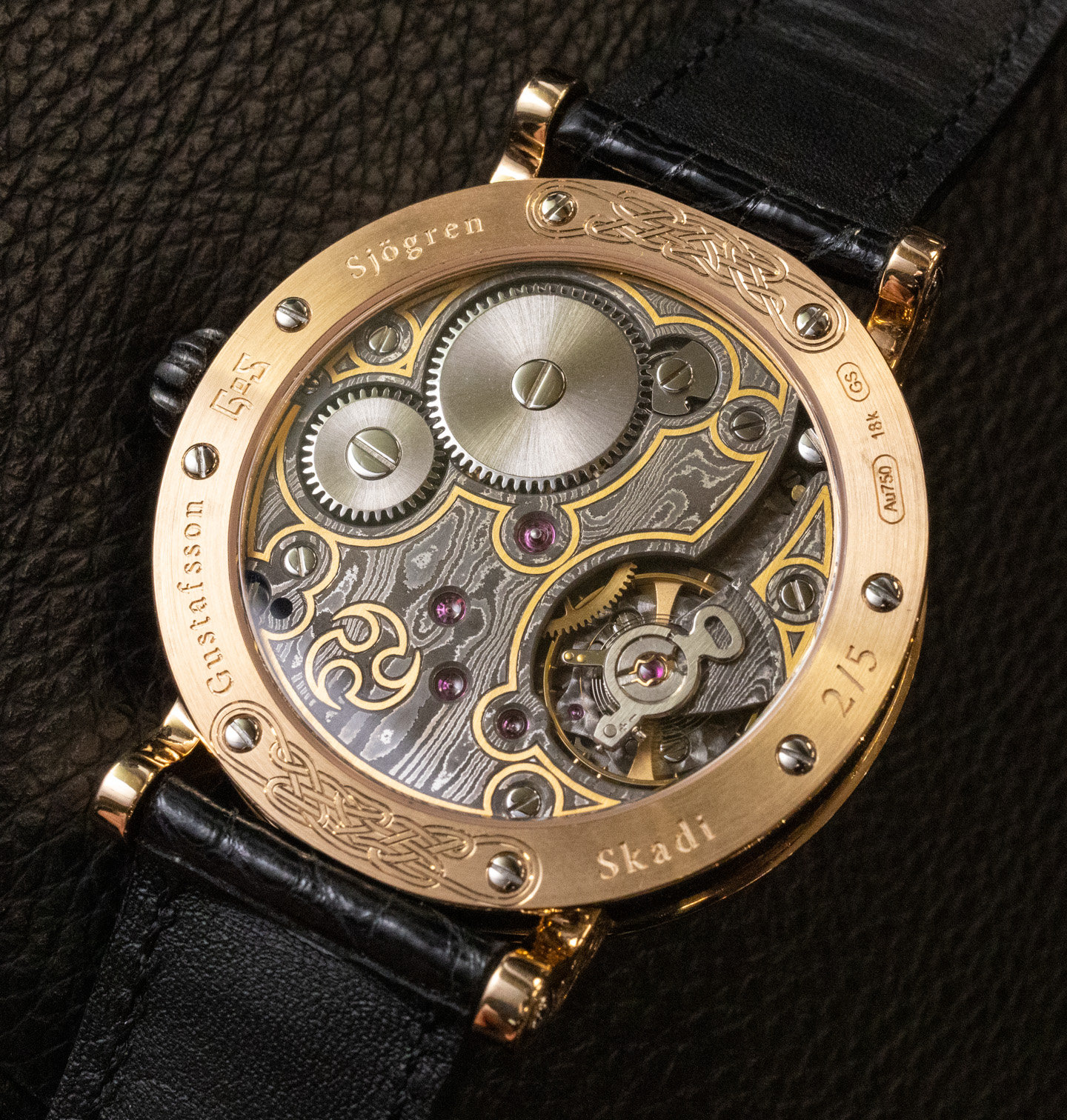
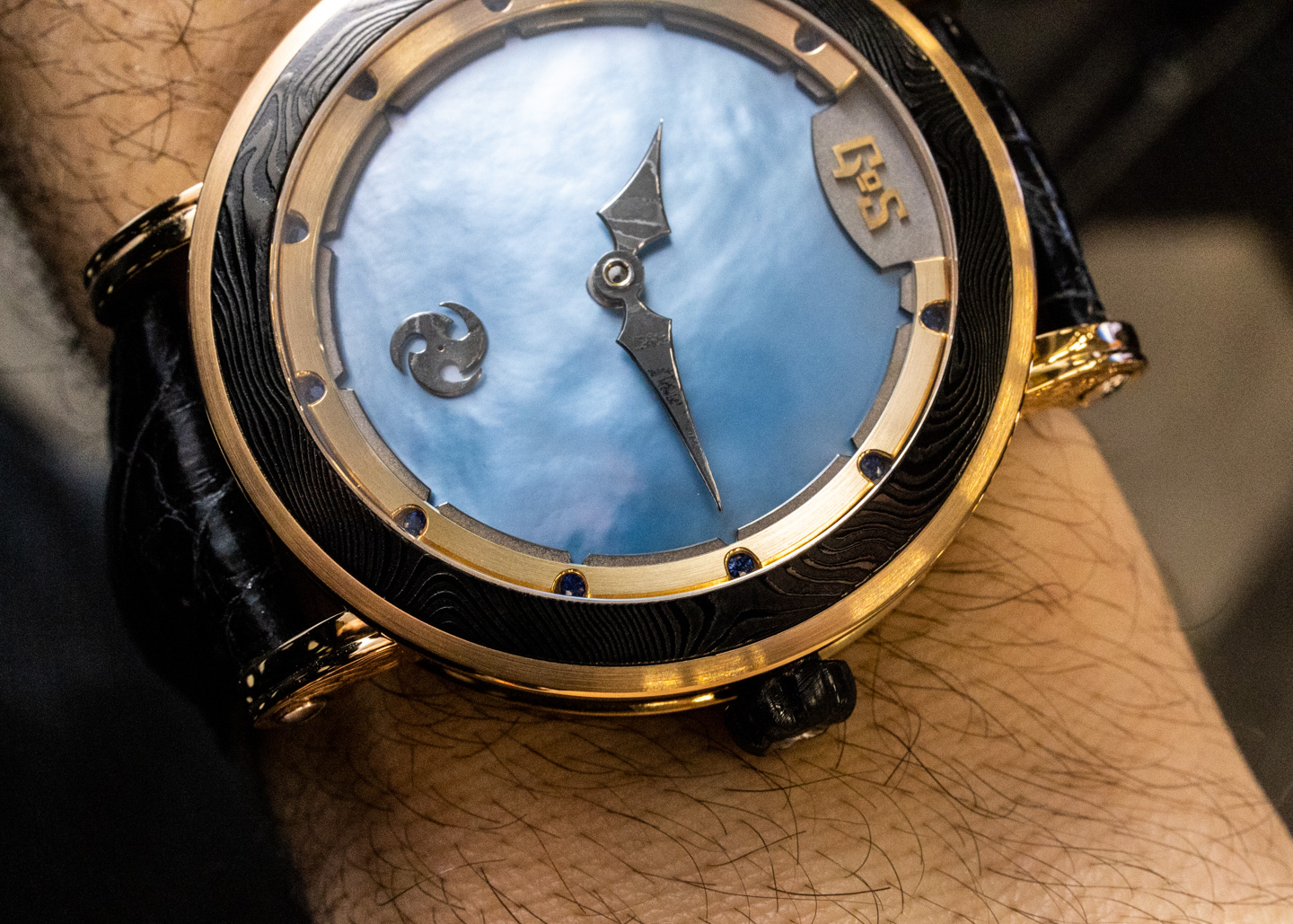
A major feature of the GoS brand is use of Damascus-style metal. This is a process which has a blacksmith layer metal sheets and then fold them together during the smithing process to create a material that has a “wood grain” appearance when machined the right way. Damascus steel and similar forms of the metal aesthetic are appreciated mainly because of their beauty and organic texture. The Skadi watch makes rather liberal use out of a variety of Damascus-style metals including for the movement, hands, and parts of the case. Specifically, GoS uses a proprietary black-colored Damascus steel which they originally created for a collaboration product with fellow watch brand Singer Reimagined. The base metal is not black, but rather a special form of PVD coating needed to be developed in order to achieve a black color while at the same time allowing you to view the Damascus steel patterns.
The rest of the 44.5mm-wide (10mm-thick) watch case is in 18k yellow gold, which helps account for the price of these limited-edition models. The case is also water-resistant to 50 meters and has a sapphire crystal over the front and back. Black and gold together make for particularly handsome colors and have been popular for masculine luxury watches for decades. What adds to these two colors is the blues on the dial, which come from the mother-of-pearl dial, as well as the small blue jewels used for the hour markers. The mother-of-pearl dial is special because it glows in the dark. It does this because GoS developed a special technique to cut a piece of mother-of-pearl thin enough for light to pass through it and charge a layer of thickly painted Super-LumiNova on the other side. Japanese brands like Casio and Citizen have long since demonstrated this property of mother-of-pearl in certain light-powered watches that rely on light to enter through mother-of-pearl to a photovoltaic cell on the other side. In this instance, GoS is using the same principle to have light enter and charge a layer of luminant. The “night shot” must be thrilling.
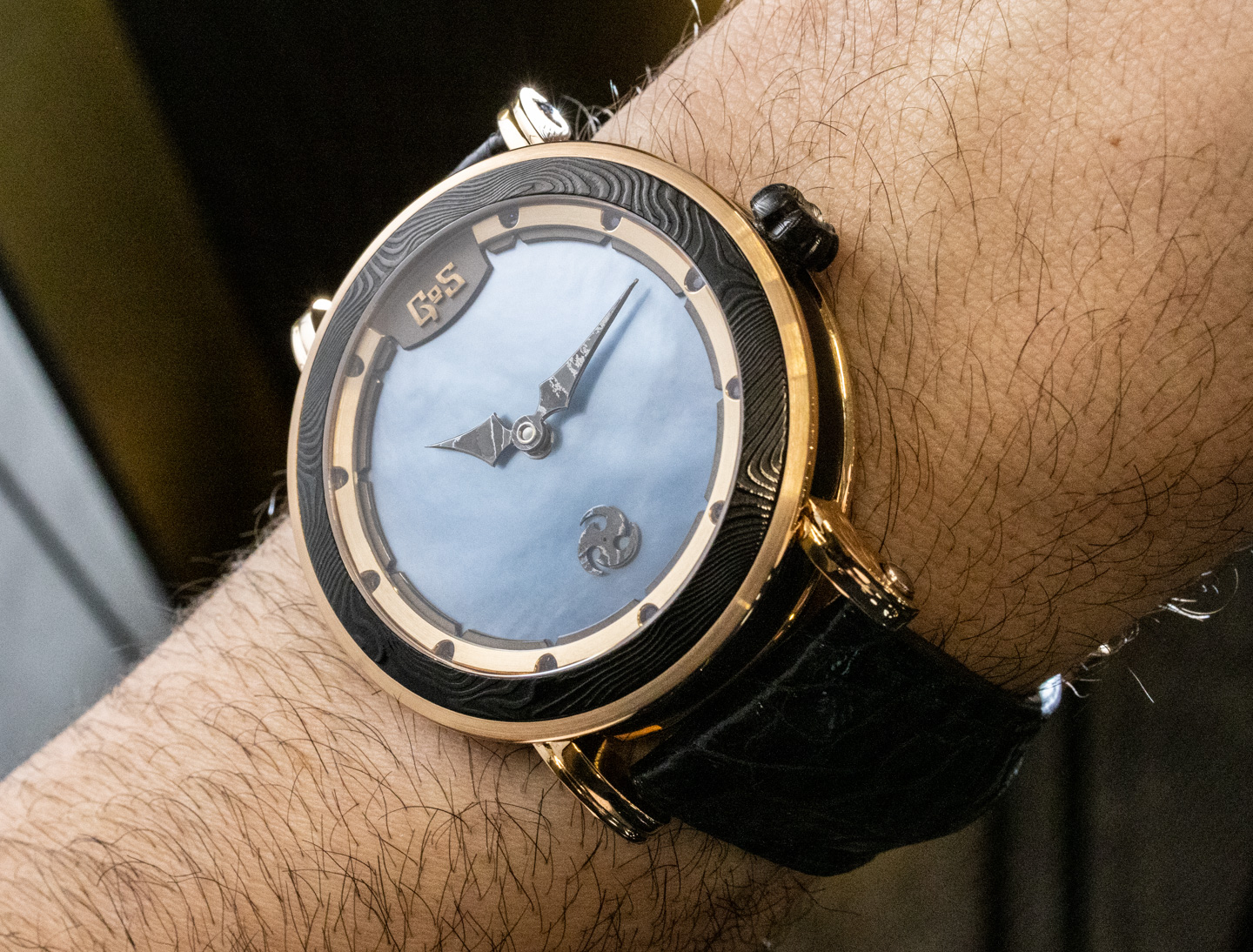
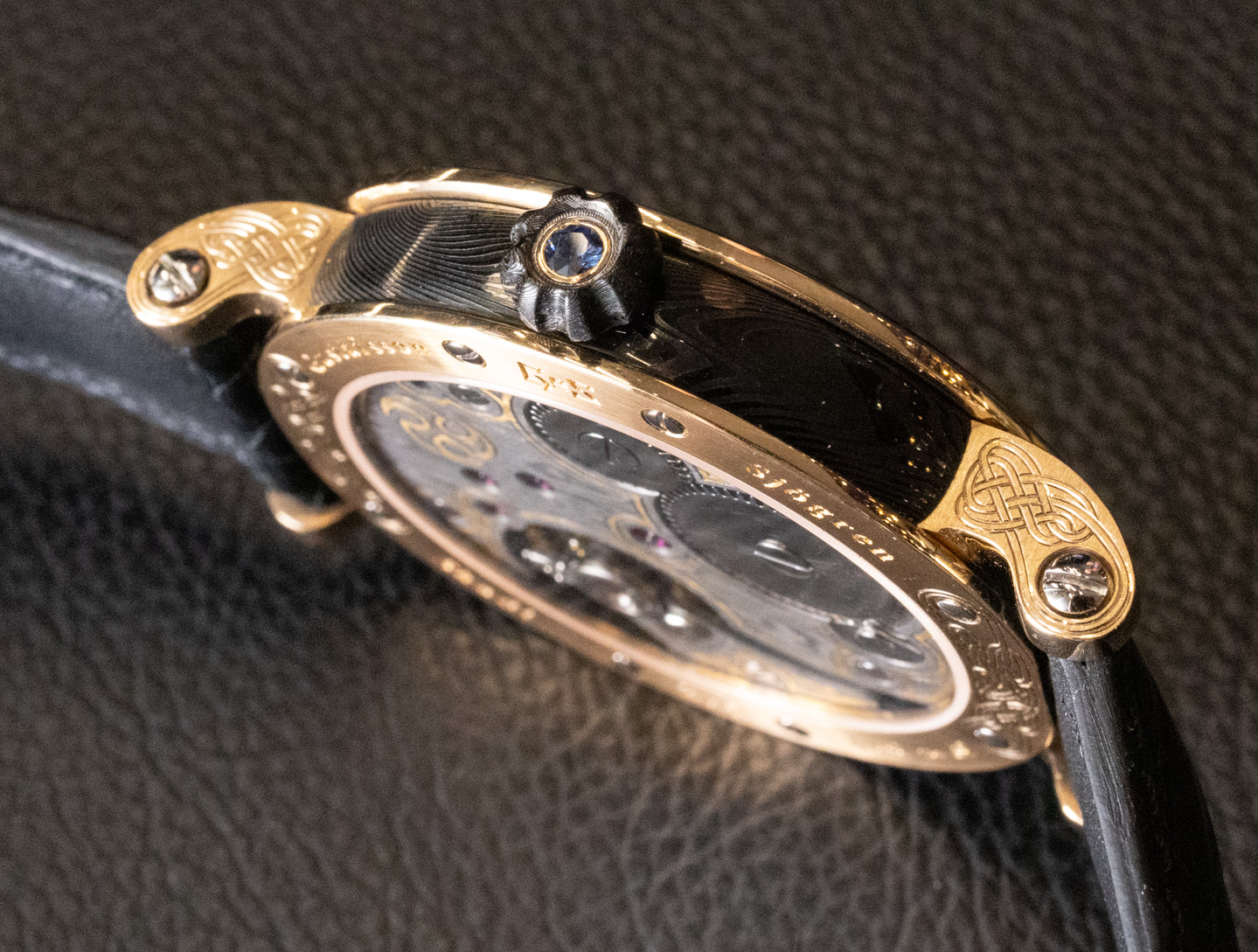
The dial itself is comprised of a few layers, including mother-of-pearl, black Damascus steel, and 18k gold. The hands are handmade by GoS and carry on the Damascus steel theme. These hands are no walk in the part to produce and must be hand-shaped and decorated with extreme care. This is especially true when wanting to both protect and emphasize the particular wood grain texture that Damascus steel fans like me appreciate. The hands include traditional hour and minute hands, and a GoS “blade” logo as the subsidiary seconds hand located at the 6 o’clock position on the dial. From afar, the dial looks like a window into a pool with the hands appearing like little floating Viking ships.
Inside the watch is a Swiss Made Soprod version of the UNITAS 6498 manually wound movement that operates at 4Hz with about two days of power reserve. Admittedly, this is not the most horologically exciting mechanical movement to be used in GoS watches, and I prefer automatic-winding movements, as it is. That said, the 6498 does offer some important artistic opportunities that include the ability for GoS to replace many of the bridges with its own specially made components crafted from Damascus steel with gold inlay. The result is very attractive and helps continue the important Damascus steel DNA look of the GoS brand.
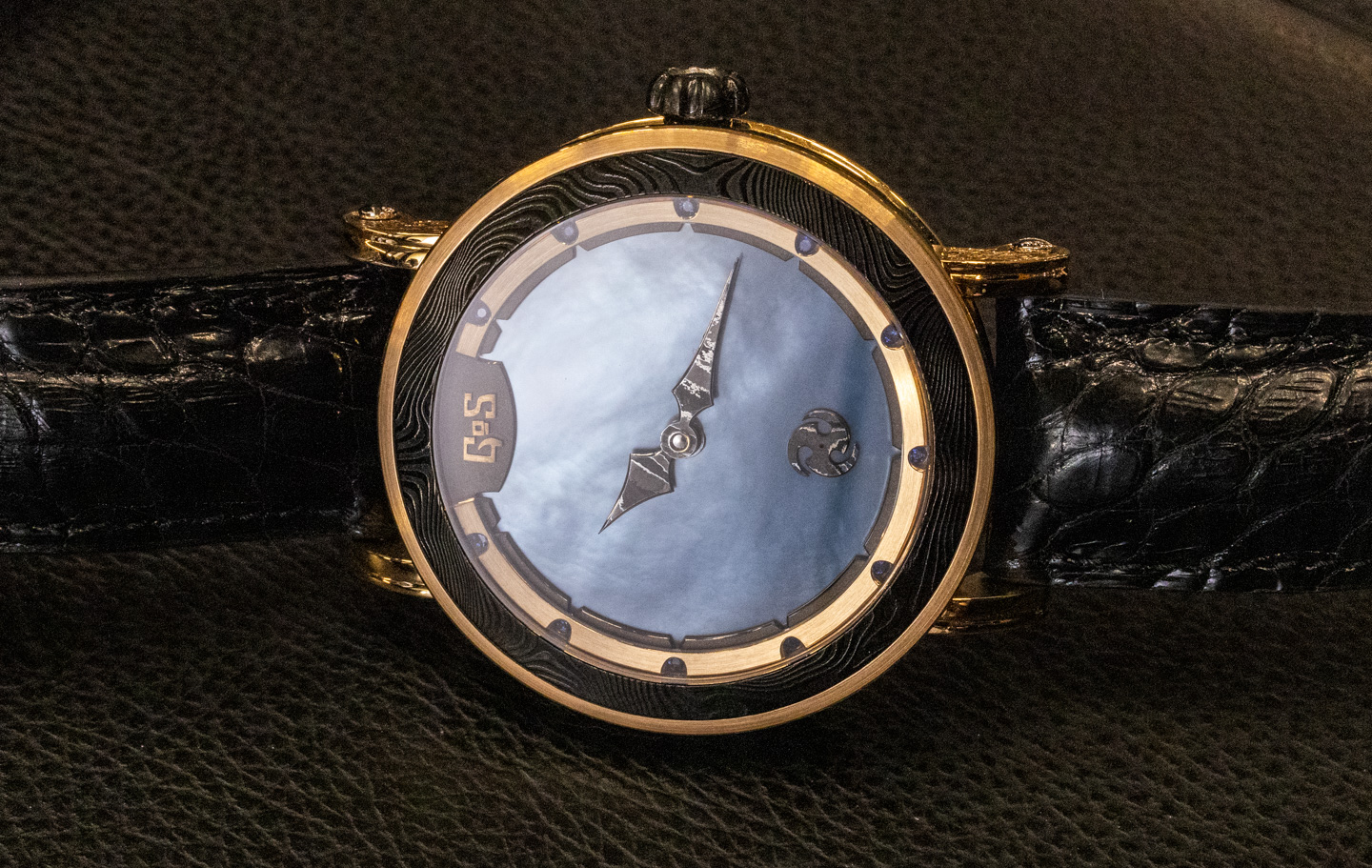
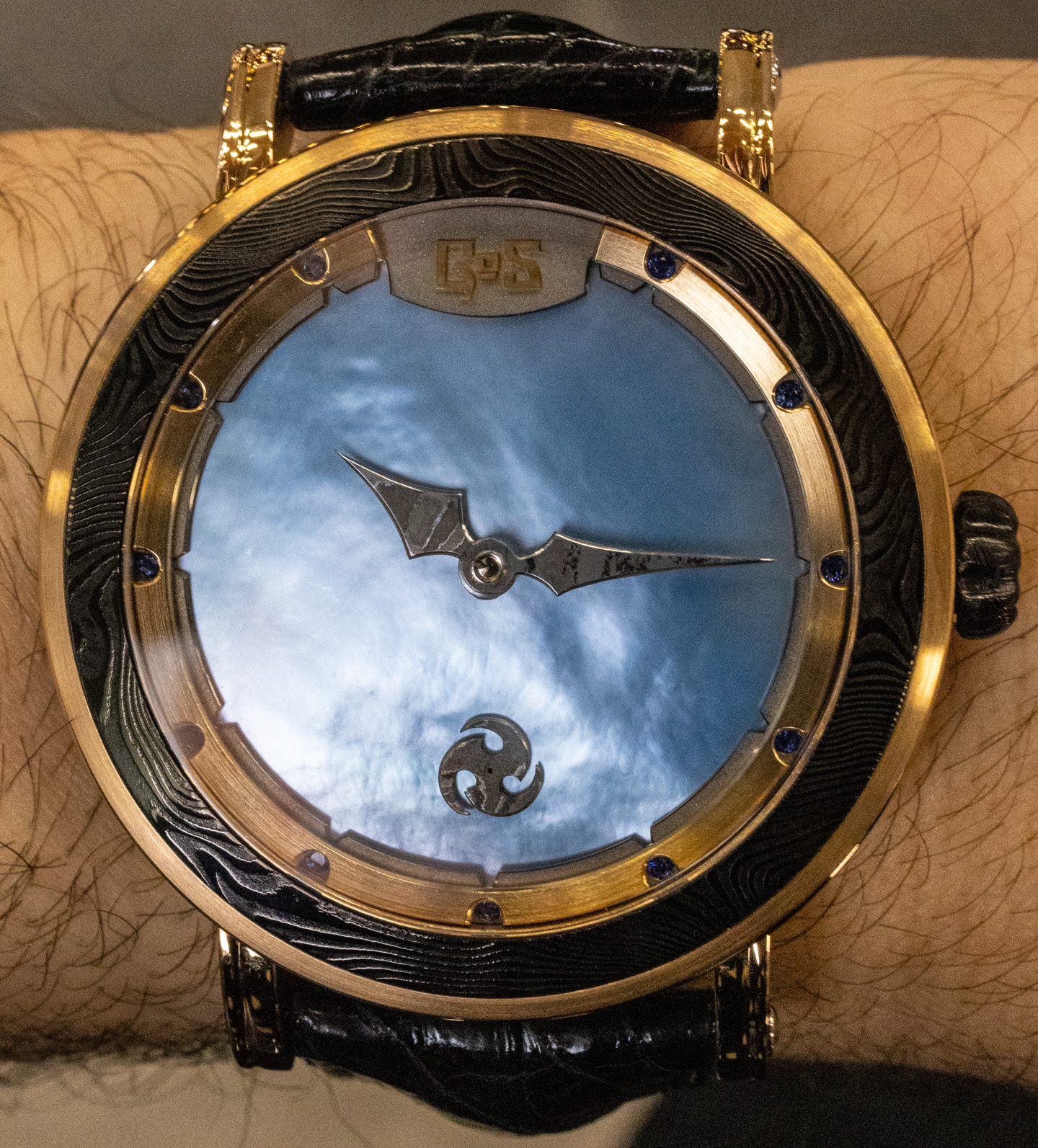
Attached to the Skadi case is a glossy black alligator strap with a matching 18k gold buckle. On the buckle and parts of the case are hand-engraved decorative elements fitting with the Nordic culture theme of the Skadi product and the GoS brand. What I most admire about a rarefied artistic wristwatch like the Skadi is that it is decidedly non-industrial given all the handwork that needs to be done. Indeed, the watch would not be produced if not for important industrial processes that allow for the production of the main components, but its personality and distinguishing characteristics are handcrafted, through and through. Accordingly, GoS almost laments the production of each of these products given how much effort goes into them, which is why elite-level artistic timepieces such as this are often “on order” only. GoS will never produce more than five pieces of the Skadi watch, and the price for each is $42,000 USD. Learn more at the GoS watches website here
.

